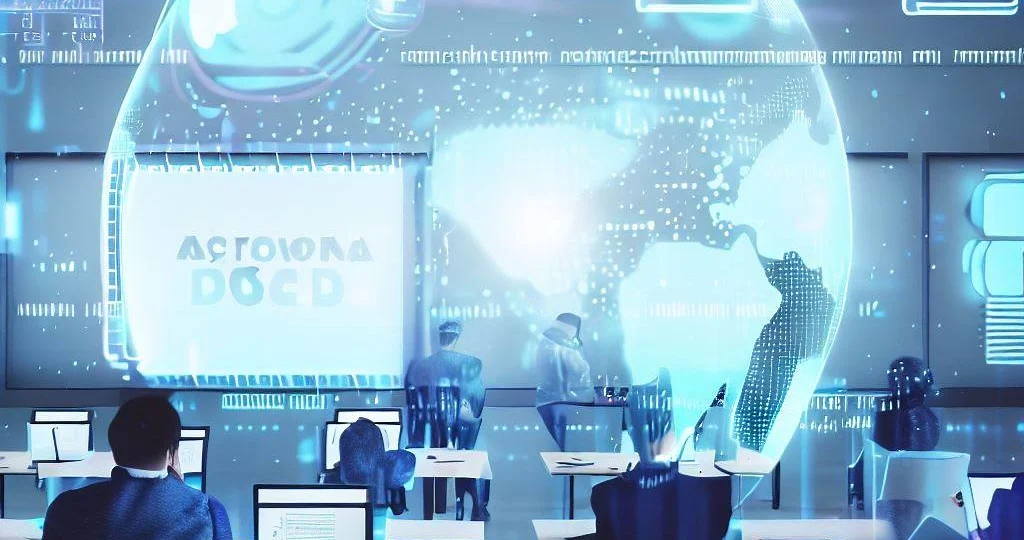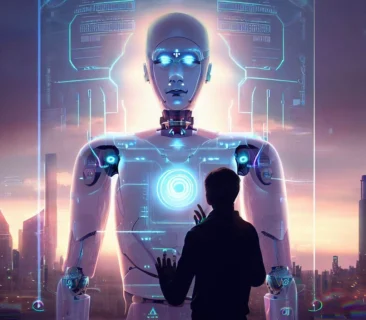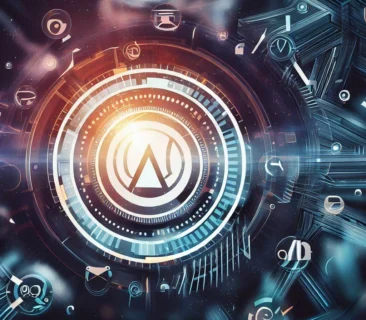Introduction:
In an era marked by rapid technological advancements, the integration of artificial intelligence (AI) into various facets of our lives is reshaping industries and sectors in profound ways. Among these transformative impacts, perhaps none is as promising and revolutionary as the marriage of AI and education. Welcome to NextechPulse, your gateway to the future of education, where we unravel the captivating implications of AI trends and innovations on modern education systems.
Gone are the days of one-size-fits-all educational approaches. As the digital age propels us forward, AI has emerged as a powerful ally in redefining how we learn, teach, and connect within educational environments. The synergy between AI and education is ushering in an era of personalized learning, data-driven insights, and unparalleled accessibility. In this article, we embark on an enlightening journey to explore the multifaceted impacts of AI on education, dissecting the key trends that are shaping the landscape and delving into the ethical considerations that accompany this technological revolution.
From tailoring educational experiences to the individual needs and preferences of students, to enabling educators to optimize their teaching methods through AI-generated insights, the implications of this dynamic fusion are far-reaching. We’ll uncover how AI is creating virtual classrooms that transcend geographical boundaries, making quality education accessible to diverse learners around the globe. Additionally, we’ll delve into the ethical dilemmas that arise when algorithms shape the learning journey and the importance of maintaining a human touch in this digital transformation.
As we navigate this intricate terrain, we will not only celebrate the innovations that have already taken root but also look ahead to the potential future developments that could further revolutionize education. The concept of lifelong learning and reskilling is gaining momentum in a rapidly evolving job market, and AI plays a pivotal role in facilitating this ongoing education journey.
1. AI-Powered Personalization:
In the fast-paced world of education, one size no longer fits all. Thanks to the infusion of artificial intelligence (AI), personalized learning has taken center stage, tailoring educational experiences to the individual needs and preferences of each student. This transformative approach is redefining the traditional classroom model and fostering more effective and engaging learning environments.
Imagine a classroom where every student’s learning journey is uniquely curated. AI algorithms analyze a student’s learning style, pace, and strengths, enabling educators to provide targeted content and assignments. For instance, a student struggling with math concepts might receive additional practice materials, while a quick learner could be challenged with more advanced exercises.
The implications of AI-powered personalization are profound. It helps bridge the gap for students who might otherwise get left behind, while also preventing gifted students from feeling held back. This tailored approach not only maximizes student potential but also nurtures a deeper connection to the subject matter by aligning with individual interests.
Moreover, AI fosters a sense of autonomy in learning. Students have a say in their educational journey, making them active participants rather than passive recipients. This level of engagement is key to retaining information and developing critical thinking skills.
The role of educators evolves in this landscape as well. Teachers become facilitators, guiding students through their personalized paths. AI helps them monitor student progress and identify areas that need intervention. This data-driven insight allows for timely and targeted support, ensuring that no student is left struggling.
However, as we embrace this personalized future, ethical considerations come to the forefront. Data privacy and security are paramount. Striking a balance between gathering essential information for personalization and protecting sensitive data is a challenge that educators, policymakers, and technologists must collaboratively address.
In conclusion, AI-powered personalization has the potential to revolutionize education by catering to the unique needs of every learner. As this trend continues to shape modern education systems, the classroom of the future will be one where students are empowered, engaged, and excited about their learning journey, driving us closer to an era where education truly knows no bounds.
2. Smart Content Delivery:
In the digital age, the way educational content is delivered has evolved significantly, thanks to the integration of artificial intelligence (AI). The concept of smart content delivery is reshaping traditional teaching methods and providing educators with powerful tools to enhance the learning experience.
AI-driven smart content delivery involves the creation and distribution of interactive and adaptive educational materials. Traditional static textbooks are transformed into dynamic resources that respond to individual student needs and progress. This adaptability ensures that students remain engaged, challenged, and motivated throughout their learning journey.
Imagine an AI-powered math textbook that not only explains concepts but also adapts the level of difficulty based on a student’s grasp of the material. If a student struggles with a particular topic, the AI system can offer additional examples and practice problems until the concept is mastered. Conversely, if a student quickly grasps a concept, the system can provide more advanced challenges to foster deeper understanding.
One of the key advantages of smart content delivery is real-time feedback. Educators can gain insights into how students are interacting with the content and identify areas of difficulty. This information enables timely intervention and the ability to address misunderstandings before they snowball into larger issues.
Furthermore, the integration of multimedia elements, such as videos, simulations, and interactive quizzes, enriches the learning experience. Visual and interactive elements cater to different learning styles, making complex topics more accessible and enjoyable for a diverse range of students.
However, the implementation of smart content delivery is not without challenges. Educators need proper training to harness the full potential of these tools. Additionally, content must be carefully curated to ensure accuracy and alignment with learning objectives.
As we embrace the era of AI-driven education, the potential for smart content delivery to revolutionize traditional classrooms is undeniable. The partnership between educators and AI tools can create a dynamic learning environment where content adapts to students’ needs, challenges are met head-on, and learning becomes an engaging and personalized journey.
3. Efficient Administrative Tasks:
Beyond transforming the learning experience, artificial intelligence (AI) is also making its mark on the administrative side of education. Educational institutions often grapple with a multitude of administrative tasks, from enrollment management to resource allocation. The integration of AI streamlines these processes, allowing educators and administrators to focus more on their core mission: providing quality education.
Enrollment management, a traditionally labor-intensive task, can now be optimized through AI algorithms. These algorithms can predict enrollment trends, helping institutions allocate resources effectively and plan for the future. By analyzing historical data and external factors, AI provides insights that guide decision-making and ensure optimal student intake.
Additionally, AI-powered chatbots and virtual assistants are transforming communication within educational institutions. Students, parents, and staff can access information and support around the clock, enhancing overall satisfaction and reducing administrative load.
Resource allocation is another area where AI shines. Educational institutions manage a plethora of resources, from classrooms and faculty assignments to budget distribution. AI algorithms consider various factors, such as classroom capacity, faculty expertise, and scheduling preferences, to allocate resources in the most efficient manner possible. This leads to improved utilization and reduced waste.
Moreover, AI aids in predictive maintenance. Schools and universities manage extensive physical infrastructure, and the timely maintenance of facilities is critical. AI can analyze data from sensors and historical maintenance records to predict when equipment is likely to fail. This proactive approach minimizes disruptions and ensures that learning environments remain conducive to education.
While AI’s impact on administrative efficiency is promising, it’s important to address potential challenges. Ensuring data accuracy and quality is crucial, as AI decisions heavily rely on the data provided. Additionally, a balance must be struck between AI-driven automation and the human touch that maintains a sense of community within educational institutions.
In conclusion, AI’s role in education extends beyond the classroom to administrative tasks that shape the overall educational experience. By optimizing enrollment, enhancing communication, and streamlining resource allocation, AI empowers educators and administrators to focus on their core mission: fostering a nurturing and engaging learning environment.
4. Data-Driven Insights:
In the realm of modern education, data has emerged as a valuable currency, providing educators and institutions with insights that drive informed decision-making. Artificial intelligence (AI) is playing a pivotal role in harnessing this data and transforming it into actionable intelligence that enhances teaching methods and curricula.
AI-driven data analytics are capable of processing vast amounts of information generated within educational systems. From student performance data to classroom engagement metrics, AI algorithms sift through this data to identify patterns and trends. Educators can then use these insights to tailor their teaching strategies to cater to the specific needs of their students.
For instance, AI can identify students who may be struggling with a particular subject and suggest interventions. Educators can receive real-time notifications, allowing them to provide timely support and personalized assistance. This data-driven approach prevents students from falling through the cracks and promotes a more inclusive learning environment.
Moreover, data-driven insights guide curriculum development. By analyzing the performance of students over time, educators can identify areas of strength and weakness in the curriculum. This enables them to refine and adapt teaching materials, ensuring that the content remains relevant and effective.
AI’s role in data-driven insights also extends to predictive analytics. By analyzing historical data, AI algorithms can predict student outcomes, helping educators identify students who may be at risk of dropping out or underperforming. Timely intervention strategies can then be implemented to provide the necessary support and guidance.
However, with great data power comes great responsibility. Ethical considerations must be at the forefront of AI-driven data analytics. Safeguarding student privacy, ensuring data accuracy, and addressing potential biases are critical to maintaining the integrity of the education process.
In conclusion, AI’s ability to transform data into actionable insights is revolutionizing education. From personalized student support to informed curriculum decisions, AI-driven data analytics empowers educators to make evidence-based choices that enhance student outcomes.
5. Virtual Classrooms and Remote Learning:
The convergence of artificial intelligence (AI) and education has transcended the boundaries of physical classrooms, ushering in an era of virtual learning that knows no geographical limits. Virtual classrooms and remote learning, powered by AI, are redefining education accessibility and inclusivity in ways we could have only imagined.
AI-enabled virtual classrooms create immersive and interactive learning environments where students and educators connect seamlessly, regardless of their geographical locations. Through video conferencing, collaborative tools, and AI-driven content delivery, students can participate in real-time discussions, engage in group projects, and receive personalized instruction, all from the comfort of their homes.
The impact of virtual classrooms is far-reaching. Geographical barriers are dismantled, making quality education accessible to individuals who may have otherwise been excluded due to distance or limited resources. This democratization of education levels the playing field, enabling diverse learners to access courses, instructors, and experiences that were once out of reach.
Remote learning, amplified by AI, also empowers self-directed learners. Students can tailor their learning schedules, accessing materials and assignments when it suits them best. AI algorithms track progress and adapt content delivery to match individual paces, ensuring an optimal learning experience.
However, the shift to virtual education is not without challenges. The digital divide, where some students lack access to necessary technology or reliable internet connections, underscores the importance of equitable access to education. Additionally, educators must adapt their teaching methods to effectively engage students in virtual settings.
In the realm of remote learning, AI-driven assessment and feedback are invaluable. AI algorithms can evaluate assignments and provide immediate feedback, aiding in continuous improvement. Educators can focus more on guiding students and fostering critical thinking, knowing that routine assessments are managed efficiently.
In the fast-evolving landscape of education, virtual classrooms and remote learning are undoubtedly shaping the future. As AI continues to refine these methods, we’re witnessing the democratization of education and the rise of lifelong learning opportunities.
Conclusion:
In the dynamic intersection of artificial intelligence and education, a new chapter in the evolution of learning is being written. The journey we’ve embarked upon through the Implications of AI Trends and Innovations in Modern Education Systems has unveiled a world of boundless possibilities and transformative potential. As we bring our exploration to a close, it’s evident that the landscape of education is undergoing a seismic shift, powered by the capabilities of AI.
The personalized learning experiences that AI offers, adapting to the unique needs of each student, have the potential to revolutionize traditional classroom dynamics. Educators armed with AI-driven insights can tailor their teaching methods, enhancing engagement and student outcomes. The virtual classrooms powered by AI not only transcend geographical barriers but also foster a sense of global community and collaboration, shaping the future of education into an inclusive and connected experience.
Yet, amidst the marvels of technology, we are reminded of the ethical considerations that must guide this transformative journey. Striking a balance between AI’s capabilities and the preservation of human interaction and empathy is crucial. As AI continues to evolve, maintaining transparency, addressing biases, and safeguarding data privacy are paramount to ensure the integrity of the education process.
The synergy between AI and education goes beyond classrooms and lecture halls. It permeates lifelong learning, providing individuals with the tools to adapt, upskill, and thrive in an ever-changing world. The concept of education as a continuous journey is being redefined, and AI is at the heart of this paradigm shift.
At NextechPulse, we’ve merely scratched the surface of a phenomenon that is reshaping education as we know it. The implications of AI trends and innovations are vast, touching every aspect of the learning ecosystem. As we part ways, we encourage you to stay curious, engaged, and vigilant about the evolving landscape. The future of education is unfolding before our eyes, and by staying informed and active, we can collectively shape it into a force that empowers generations to come.
Thank you for joining us on this enlightening journey into the realm of AI and education. Together, let’s continue to explore, question, and inspire change as we embrace the exciting horizons that lie ahead.
Stay tuned with NextechPulse for more insightful explorations at the crossroads of technology and education. The future beckons, and we’re honored to be your guide.
Empower. Educate. Elevate.
References:
1. Education Data: What Can Artificial Intelligence Teach Us? (2019). EdTech Magazine. Link
2. Brown, M. (2021). 5 Ways AI Is Changing Education. EdTech Magazine. Link
3. Johnson, A. (2020). The Role of Artificial Intelligence in Education. The EvoLLLution. Link
4. D’Mello, S., & Graesser, A. (2012). Dynamics of affective states during complex learning. Learning and Instruction, 22(2), 145-157.
5. Education Data: How Do You Protect Student Privacy? (2020). EdTech Magazine. Link




